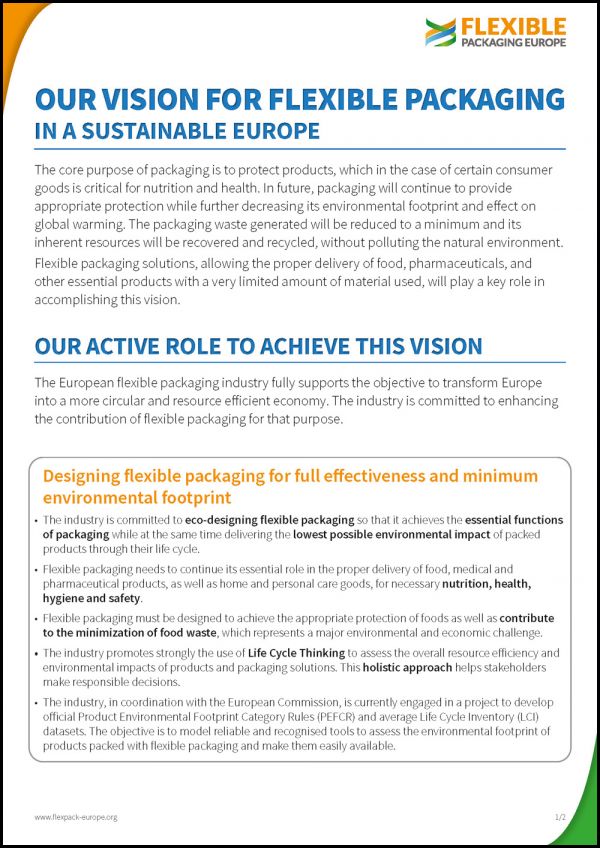Designing flexible packaging for full effectiveness and minimum environmental footprint
- The industry is committed to eco-designing flexible packaging so that it achieves the essential functions of packaging while at the same time delivering the lowest possible environmental impact of packed products through their life cycle.
- Flexible packaging needs to continue its essential role in the proper delivery of food, medical and pharmaceutical products, as well as home and personal care goods, for necessary nutrition, health, hygiene and safety.
- Flexible packaging must be designed to achieve the appropriate protection of foods as well as contribute to the minimization of food waste, which represents a major environmental and economic challenge.
- The industry promotes strongly the use of Life Cycle Thinking to assess the overall resource efficiency and environmental impacts of products and packaging solutions. This holistic approach helps stakeholders make responsible decisions.
- The industry, in coordination with the European Commission, is currently engaged in a project to develop official Product Environmental Footprint Category Rules (PEFCR) and average Life Cycle Inventory (LCI) datasets. The objective is to model reliable and recognised tools to assess the environmental footprint of products packed with flexible packaging and make them easily available.


